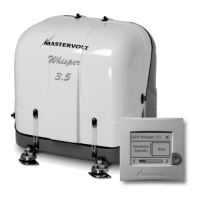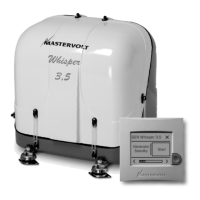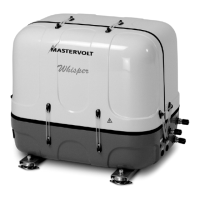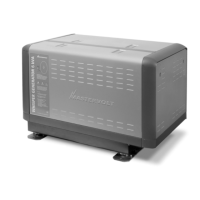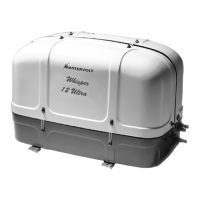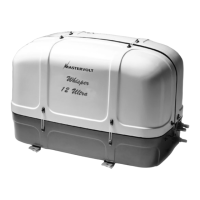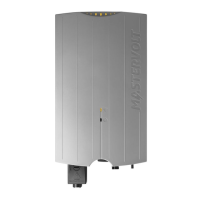2 INSTALLATION
To ensure reliability and durability of the equipment, it is
very important that the installation is carried out with the
utmost care and attention. To avoid problems, such as
temperature problems, noise levels, vibration, etc. the
instructions set out in this manual must be followed and
all installation work must be carried out professionally.
2.1 LOCATION
When looking for a proper place for a generator in a
vehicle all relevant aspects have to be taken into account
* Accessibility
* Solid foundation
* Space to mount the radiator (Refer to par. 2.4.3)
* Space to mount the exhaust (Refer to par. 2.4.2)
* A way to fit the fuel lines
Since Whisper generating sets have extremely compact
dimensions, they can be installed in tight locations.
Please consider that even almost maintenance-free
machinery must still remain accessible.
When selecting the location area to mount the generating
set, make sure there is sufficient room to carry out any
maintenance work. The unit must be easily accessible on
the service side. Full access is possible from the front
and from above.
Oil filling can be done on the service side and on the top.
Cooling liquid can be filled via the expansion tank. The
top of the engine (rocker cover) has to be accesible for
adjustment of the valve clearance.
Please also note that in spite of the automatic oil pressu-
re sensor it is still essential that the oil level is checked
regularly.
2.2 INSTRUCTIONS FOR OPTIMAL SOUND
AND VIBRATION INSULATION
When it is possible to mount the unit directly on the
chassis of the vehicle this has advantages in preventing
vibrations by resonance.
2.2.1 Steel base plate
When it is not possible to fit the generator directly on the
chassis and the unit is on a light floor or other light
construction, Mastervolt recommends the use of an extra
set of rubber mountings and a heavy steel base plate if
the additional weight is no objection. To keep resonant
vibrations at a minimum, it is possible to mount the
generating set on a solid steel base plate, approx. 40 mm
4 July 2005 / MOBILE WHISPER 3,5 / EN
INSTALLATION
The alternator should be kept as cool as possible. In
practice an alternator starts getting less efficient above
40° Celsius. It is hardly possible to cool down the coolant
of the alternator below 40° using a radiator. When a
vehicle is in the sun on a parking place the ambient
temperature itself could be 40° Celsius.
Because of the divergence in the working temperature of
engine and alternator it will be clear that it is not possible
to combine the cooling of the engine and alternator in
one radiator system.
Furthermore it will be clear that it is very difficult to cool
an alternator optimally with the aid of a radiator in
conditions with high ambient temperatures.
The two radiators used to cool the engine and alternator
of the Whisper 3,5 are integrated in one housing and one
electric driven fan blows the air through both radiators.
Why should the alternator being cooled by water:
The Whisper 3,5 has an unique engine being cooled by oil
instead of water. The oil is used for both cooling and
lubrication and has to be refreshed regularly. As the
separate cooling system for the alternator is only for cooling
it is better to use “water” or in fact special cooling liquid.
For normal industrial use alternators are cooled by air.
This requires a flow of air through the alternator of many
m3 per minute. With the air, the noise comes out into the
open. Generators on vehicles can only made silent by full
enclosure in a sound shield canopy. The only opening in
the Whisper canopy is the inlet for combustion air. For
that reason the alternator is cooled by water. Although
cooling the alternator by circulating water through a
radiator is not ideal; it is much better than by air.
Therefore aircooled alternators are rarely used in
vehicles.
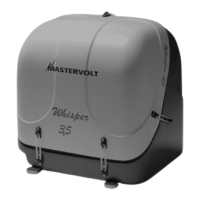
